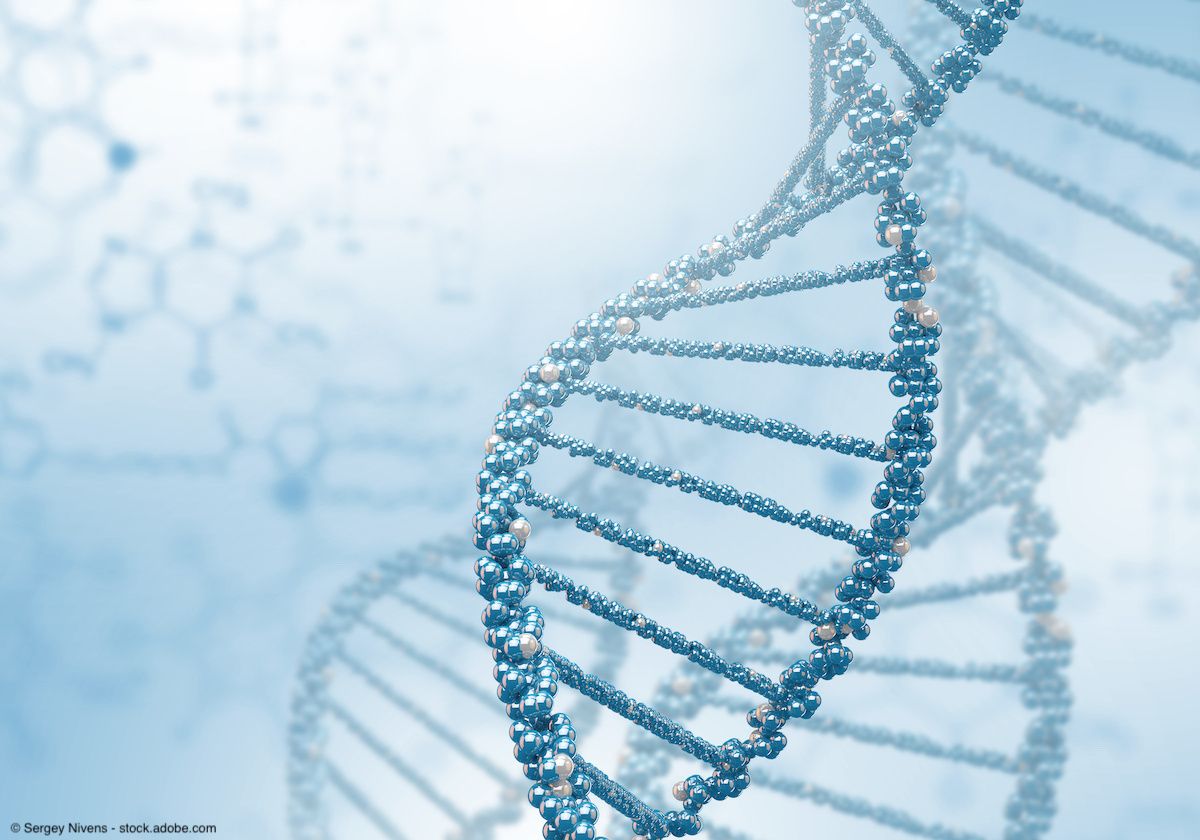News
Article
Gene mutations associated with response to cisplatin-based chemotherapy in MIBC
Author(s):
Patients who had mutations in the ERCC2, ATM, or RB1 genes were more than 5 times more likely to achieve a pathologic complete response following cisplatin-based chemotherapy.
Patients with muscle-invasive bladder cancer (MIBC) whose tumors harbor mutations in the DNA damage repair genes ERCC2, ATM, or RB1 were more likely to achieve a pathologic complete response (pT0) to cisplatin-based chemotherapy, according to recent data from a validation study of patients enrolled in the S1314 COXEN trial (NCT02177695).
The ability of the 3-gene signature to select for patients who are more likely to achieve a pathologic complete response following chemotherapy is currently being assessed in the phase 2 RETAIN and RETAIN 2 trials.

These findings validate previous findings from the S1314 trial showing a positive correlation between the presence of specific gene mutations and pT0 at the time of cystectomy.
“The SWOG S8710 randomized trial provided level 1 evidence supporting the use of neoadjuvant chemotherapy in eligible patients with muscle-invasive bladder cancer, but uptake was disappointing because the magnitude of the effect was considered modest,” said senior author David James McConkey, PhD, of Johns Hopkins Greenberg Bladder Cancer Institute in Baltimore, Maryland, in a news release on the findings.2 “So we designed the S1314 COXEN trial to test whether a tumor biomarker known as the COXEN score could predict which patients had tumors that were likely to respond to neoadjuvant chemotherapy.”
Updated data from the trial show that patients who had mutations in the ERCC2, ATM, or RB1 genes were more than 5 times more likely to achieve a pathologic complete response following cisplatin-based chemotherapy (OR, 5.36; 95% CI, 2.05, 14.02; P = .0006) compared with patients without mutations. For the study, pathologic complete response was measured by pathological downstaging at the time of cystectomy.
There was a significant association between the number of mutations and pT0 (P < .001), with no mutations associated with 14% pT0, 1 mutation associated with 41% pT0, and 2 or more mutations associated with 67% pT0. The investigators also found that the gene mutations were better at predicting the presence of disease (NPV for pT0, 86%; 95% CI, 73%-94%) than the absence of disease (PPV for pT0, 48%; 95% CI, 35%-62%).
There was no interaction between the type of cisplatin-based chemotherapy received and the genetic variant in terms of pT0.
In total, the study assessed banked tissue samples from 105 patients with MIBC who were included in the large multicenter SWOG S1314 trial. Patients in the S1314 study received either neoadjuvant gemcitabine and cisplatin (GC), or dose-dense methotrexate, vinblastine, adriamycin, and cisplatin (DDMVAC). Patients underwent next-generation sequencing using the CARIS 592 Gene Panel. Tumor samples were collected at initial biopsy.
According to the authors, findings from this validation study suggest that the biomarker test, in combination with clinical assessment, may help determine which patients would be better suited for bladder surveillance vs cystectomy. The ability of the 3-gene signature to select for patients with MIBC who are more likely to achieve a pathologic complete response following neoadjuvant cisplatin-based chemotherapy is currently being assessed in the phase 2 RETAIN (NCT02710734) and RETAIN 2 (NCT04506554) trials.
Lead author Elizabeth R. Plimack, MD, MS, FASCO, of Fox Chase Cancer Center in Philadelphia, Pennsylvania, concluded in the news release, “The evolution of more effective systemic neoadjuvant therapies in conjunction with innovative tools such as urine-based tests for detection and monitoring patients on bladder surveillance will build on this work toward a goal of avoiding cystectomy in cases where radical surgery is not required to achieve cure.”2
References
1. Plimack ER, Tangen C, Plets M, et al. Correlative analysis of ATM, RB1, ERCC2, and FANCC mutations and pathologic complete response after neoadjuvant chemotherapy in patients with muscle-invasive bladder cancer: results from the SWOG S1314 trial. Eur Urol. 2024:S0302-2838(24)02453-9. doi:10.1016/j.eururo.2024.06.018
2. Mutations in DNA damage repair genes associated with response to cisplatin in bladder cancer: Prospective validation from SWOG S1314 trial. News release. SWOG Cancer Research Network. July 29, 2024. Accessed September 3, 2024. https://www.eurekalert.org/news-releases/1052888
















